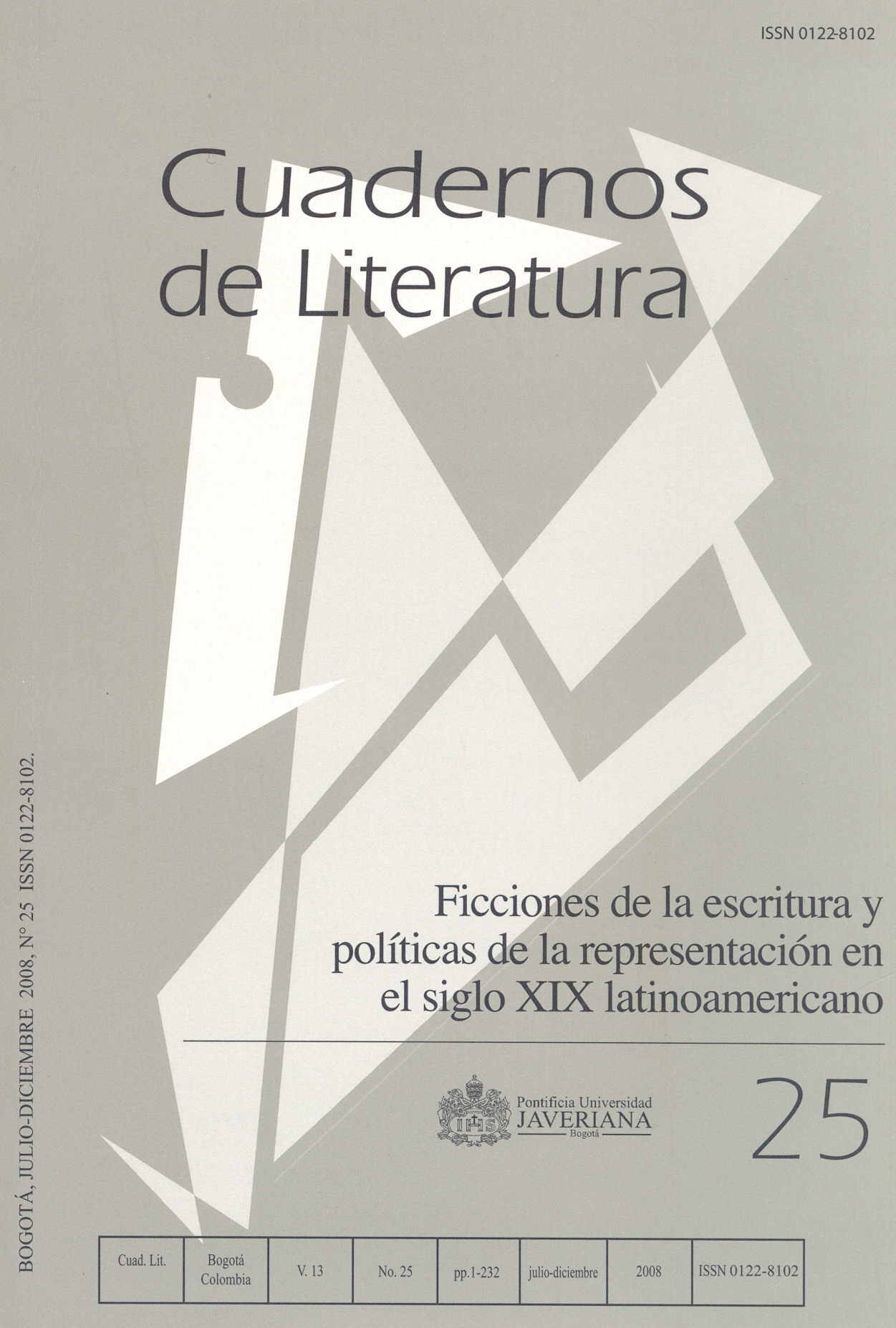Abstract
El presente ensayo examina el contexto sociopolítica en el que aparece Dos partidos en lucha: fantasía cientifica (1875), la primer novela del naturalista argentino Eduardo L.Homberg. Publicada a pocos meses del fracaso de la Revolución mitrista de 1874, la ficción de Holmberg postula a la ciencia como coartada eficiente para denunciar las desmesuradas formas de hacer política en la sucesión presidencial entre Domingo Faustino Sarmiento y Nicolás Avellaneda. De esta manera, Holmberg emplaza facciones científicas encabezadas por sabios menos atentos a los dictados de la razón que la pulsión pasional, que moviliza las constantes disputas políticas entre mitristas y alsinistas. La fractura que informa el disenso político se erige, entonces, en la protagonista a interrogar, una fractura cuya inusitada profundidad desborda lo inimaginable.Cuadernos de Literatura is registered under a Creative Commons Attribution 4.0 International Public License. Thus, this work may be reproduced, distributed, and publicly shared in digital format, as long as the names of the authors and Pontificia Universidad Javeriana are acknowledged. Others are allowed to quote, adapt, transform, auto-archive, republish, and create based on this material, for any purpose (even commercial ones), provided the authorship is duly acknowledged, a link to the original work is provided, and it is specified if changes have been made. Pontificia Universidad Javeriana does not hold the rights of published works and the authors are solely responsible for the contents of their works; they keep the moral, intellectual, privacy, and publicity rights.
Approving the intervention of the work (review, copy-editing, translation, layout) and the following outreach, are granted through an use license and not through an assignment of rights. This means the journal and Pontificia Universidad Javeriana cannot be held responsible for any ethical malpractice by the authors. As a consequence of the protection granted by the use license, the journal is not required to publish recantations or modify information already published, unless the errata stems from the editorial management process. Publishing contents in this journal does not generate royalties for contributors.


